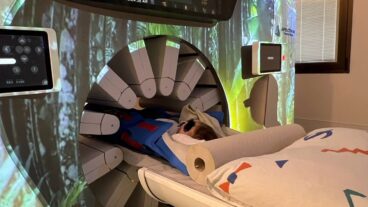An Israeli researcher has found a link between back pain and genetics.

About 75 percent of people experience back pain at some point in their lives, particularly as they get older. But until now, little has been understood about the causes and mechanisms of this common problem.
Now, research from Prof. Gregory Livshits of Tel Aviv University’s Sackler Faculty of Medicine shows that genes have a lot to do with backaches, and each type of pain may have different genetic origins.
The results of this study, carried out with scientists at London’s Kings College and recently published in the journal Annals of the Rheumatic Diseases, may help identify the different mechanisms involved in back pain and lead to more effective treatment options.
Identical twins, identical pains
It’s clearly not just genetics that contributes to back pain. Human anatomy is also a major cause, since walking upright causes strain and subsequent deterioration of the muscular skeletal system. Excessive body weight or physical exertion frequently aggravates the problem.
However, the new research shows that genes play a key role in lower back pain and in the deterioration of intervertebral discs of the spine. Livshits says these two phenomena don’t necessarily occur together, and are caused by different genetic factors.
Preliminary testing done in Israel more than 10 years ago gave scientists their first clue to the connection between genetics and back pain. A study conducted on Arab families revealed recurring patterns of lower back pain. Many relatives of the same family would develop the same symptoms, even at a young age.
To further test these observations, Livshits and his team looked at a sample twin population of 2,500 individuals, comprising both identical and non-identical female twins.
They tested for several potential risk factors, such as smoking, weight, physical labor and vertebral disc degeneration, as well as genetic predisposition. Each subject got a thorough battery of tests: MRIs of the spine; radiographic assessment of muscle, fat and bone mass; and blood work to determine DNA, genotype and potential biomarkers associated with joint disease.
Non-identical twins who share half their genes were almost three times more likely to suffer from back pain if their twin did so as well. Identical twins, who share all of their genes, were six times more likely to have joint disease if their twin had the same disease.
Refining genetic testing
Although disc degeneration is often associated with lower back pain, researchers discovered that the two conditions could exist independently, and are caused by separate genetic factors.
“We have genetic factors that affect the rate and extent of the degeneration of our discs. In fact, the genetic factors are second only to age,” explains Livshits. “On the other side, we have different genetic factors that independently cause lower back pain. These are mechanisms not involved in spine degeneration.”
This discovery could revolutionize the study and treatment of back pain, he says. More research on the genetic causes of back pain is indicated, along with a broader genome search of affected and non-affected individuals. To accomplish that, Livshits hopes to put together a consortium of research groups made up of university-based scientists in several countries.












